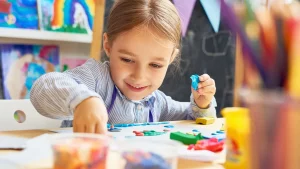
Art therapy has a rich history dating back to prehistoric times, evolving into a formalized practice in the mid-20th century. Lisa Foster, an art therapist at the Willow Center in Toledo, emphasizes its importance in helping young people cope with grief and trauma by tapping into their creative side. Raja Aossey-Jensen, a board-certified art therapist at C.S. Mott Children’s Hospital, underscores art therapy’s role in providing hospitalized children with a healthy outlet for expressing emotions. Aossey-Jensen stresses that art therapy is not merely a drawing class but a guided therapeutic process facilitated by trained professionals. Brian Lowe, a Toledo resident, advocates for art therapy’s transformative power, particularly for children facing traumatic experiences. Art therapy provides a non-invasive method for young patients to process emotions and build self-worth through creative expression. It enables children to communicate thoughts and feelings they may struggle to articulate verbally. Through group settings, art therapy assures children they are not alone in their experiences, fostering a sense of community and support. The practice helps children develop coping skills and resilience, empowering them to navigate challenges in their lives. Overall, art therapy offers younger individuals a safe and effective means to explore and process emotions, promoting emotional well-being and personal growth.
To read this thrilling story, click here
Jasleen Kaur, UConn KIDS Research Assistant